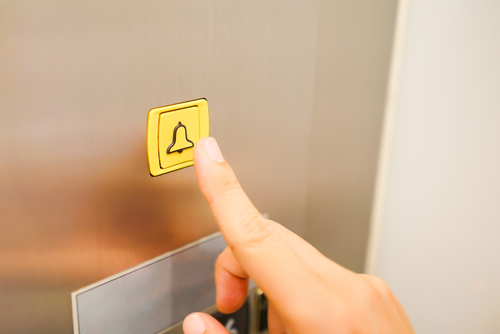
Emergency Lift Maintenance: Handling Unexpected Breakdowns
August 23, 2023
The Lifespan of Elevator Components: When to Replace
October 5, 2023Lift Maintenance in Commercial Properties

Lift Maintenance in Commercial Properties
Lift Maintenance in Commercial Properties. Elevators are the backbone of modern commercial properties, enabling efficient vertical transportation for both customers and employees.
In this comprehensive guide, we delve into the crucial role of elevators in businesses, the importance of regular maintenance, designing proactive maintenance plans, addressing common issues, emergency preparedness, integrating technology, budgeting, selecting reliable maintenance partners, and even showcasing successful case studies.
This guide equips businesses with the knowledge needed to ensure their commercial lifts’ reliability, safety, and optimal performance.
Elevators are more than just functional tools; they are integral to the smooth operation of commercial properties. They provide vital accessibility for customers, especially those with mobility challenges, and streamline employee movement within multi-story buildings.
Ensuring Smooth Vertical Transportation for Customers and Employees
In bustling commercial properties such as office buildings, shopping malls, and mixed-use developments, elevators play a pivotal role in creating seamless experiences.
They enhance customer satisfaction by making spaces accessible and comfortable. Elevators streamline daily routines for employees, reducing the time spent navigating between floors.
Understanding Commercial Lift Systems
Types of Elevators Used in Commercial Properties
Commercial properties deploy various types of elevators, including passenger, freight, and specialized elevators for specific purposes like medical facilities. Each type serves distinct needs and must be maintained accordingly.
Components and Mechanisms of Commercial Lifts
Understanding commercial lifts’ intricate components and mechanisms is essential for effective maintenance. Each element contributes to the elevator’s performance, from the traction system to the control panel.
Importance of Lift Safety Features in Commercial Spaces
Safety is paramount in commercial spaces. Lifts have safety features such as door sensors, emergency brakes, and fire-rated doors to ensure passenger security during operation.
Importance of Regular Maintenance
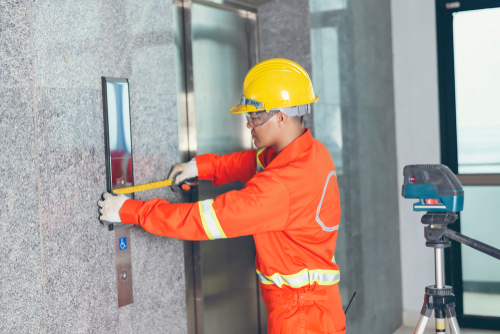
Enhancing Longevity and Performance of Commercial Lifts
Regular maintenance prolongs the lifespan of commercial lifts by preventing wear and tear. Well-maintained elevators operate more efficiently and experience fewer breakdowns.
Compliance with Safety and Regulatory Standards
Compliance with safety and regulatory standards is non-negotiable. Routine maintenance ensures that lifts meet safety codes, protecting both occupants and businesses from legal liabilities.
Minimizing Disruptions to Business Operations
Unscheduled lift breakdowns can disrupt business operations and inconvenience occupants. Regular maintenance reduces the risk of unexpected malfunctions, maintaining uninterrupted vertical transportation.
Designing a Proactive Lift Maintenance Plan
Tailoring Maintenance Plans to Specific Property Needs
Every commercial property is unique, requiring a tailored maintenance plan that addresses its specific needs and usage patterns.
Scheduling Routine Inspections and Servicing
Routine inspections and servicing are the backbone of proactive maintenance. Establishing a schedule ensures that lifts are regularly evaluated and serviced.
Collaborating with Certified Lift Maintenance Providers
Certified lift maintenance providers bring expertise to the table. Collaborating with professionals ensures that maintenance tasks are carried out to the highest standards.
Identifying Common Issues and Early Warning Signs
Recognizing Unusual Noises and Vibrations
Unusual noises or vibrations during elevator operation can indicate underlying issues. Early detection allows for timely intervention before problems worsen.
Monitoring Lift Door Operations for Smooth Functionality
Smooth lift doors are crucial for passenger safety. Monitoring doors’ functionality prevents potential hazards and keeps the elevator in optimal working condition.
Addressing Inconsistent Floor Leveling
Inconsistent floor leveling can lead to tripping hazards and discomfort for passengers. Regular maintenance ensures accurate floor alignment.
Emergency Preparedness and Response
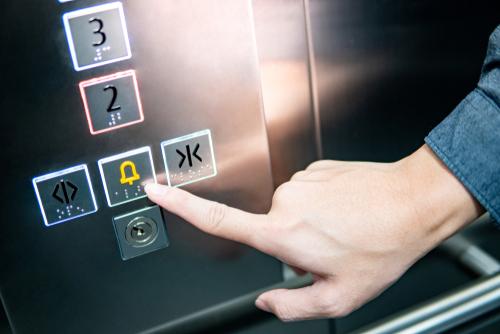
Developing an Emergency Protocol for Lift Malfunctions
Having a well-defined emergency protocol is vital. Building occupants should know the steps to follow in case of a lift malfunction.
Installing Emergency Communication Systems
Emergency communication systems provide a lifeline for occupants during lift breakdowns. Installing these systems ensures swift communication with authorities and maintenance personnel.
Training Building Staff for Crisis Situations
Building staff should be trained to handle lift malfunctions and emergencies. Their knowledge ensures that occupants are guided through crisis situations safely.
Conducting Regular Maintenance Tasks
Lubrication of Moving Parts for Optimal Performance
Lubrication of moving parts minimizes friction and ensures smooth elevator operation. Regular lubrication extends the lifespan of components.
Inspection and Replacement of Worn-out Components
Inspecting and replacing worn-out components prevents major breakdowns. Timely replacement safeguards against potential safety hazards.
Calibration of Safety Sensors and Controls
Calibrating safety sensors and controls is essential for accurate functionality. Proper calibration ensures that safety features respond as intended.
Technology Integration in Lift Maintenance
Implementing Remote Monitoring and Diagnostic Tools
Remote monitoring and diagnostic tools allow for real-time evaluation of elevator performance. Remote access helps maintenance teams identify issues promptly.
Utilizing IoT for Real-time Data Collection
IoT-enabled sensors collect real-time data about elevator operations, enabling predictive maintenance and informed decision-making.
Leveraging Predictive Analytics for Preventive Maintenance
Predictive analytics analyze data to forecast potential issues before they arise. This proactive approach minimizes downtime and enhances maintenance efficiency.
Selecting a Reliable Lift Maintenance Partner
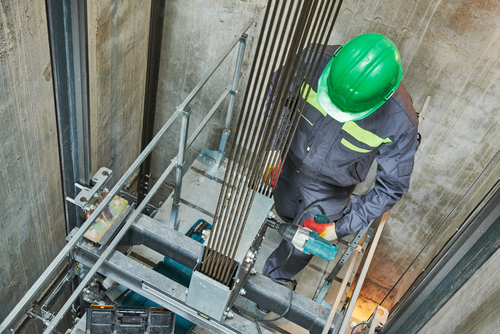
Researching and Comparing Maintenance Service Providers
Thorough research and comparison of maintenance service providers ensure that you choose a partner that aligns with your needs.
Checking for Industry Certifications and Experience
Industry certifications and experience indicate the expertise of a maintenance partner. Choosing a certified provider ensures quality service.
Seeking References and Reviews from Other Businesses
References and reviews provide insights into maintenance service providers’ reputations and track records.
FAQs:
Why is lift maintenance crucial for commercial properties?
Lift maintenance is crucial to ensure elevators’ safe and efficient operation, which are integral to the accessibility and convenience of commercial spaces.
How often should commercial lifts undergo maintenance?
Commercial lifts should undergo routine maintenance at least once every few months, depending on usage and manufacturer recommendations.
What are the potential risks of neglecting lift maintenance?
Neglecting lift maintenance can lead to frequent breakdowns, safety hazards, disruptions to business operations, and legal liabilities.
Can I perform lift maintenance in-house or should I hire professionals?
While basic tasks can be performed in-house, hiring certified lift maintenance professionals is recommended for thorough inspections, repairs, and compliance with safety standards.
How does predictive analytics improve lift maintenance efficiency?
Predictive analytics use data insights to forecast potential issues, enabling proactive maintenance and reducing downtime.
What role does technology play in modernizing lift maintenance?
Technology, such as remote monitoring, IoT-enabled sensors, and diagnostic tools, enhances lift maintenance by providing real-time data and facilitating quick interventions.
What are the key considerations in budgeting for lift maintenance?
Budgeting should account for routine maintenance costs, unexpected repairs, and potential upgrades, ensuring a comprehensive financial plan.
How can a reliable lift maintenance partner enhance business outcomes?
A reliable maintenance partner brings expertise, certifications, and experience to the table, ensuring that elevators are well-maintained and operational, enhancing customer experiences and business reputation.
Lift Maintenance in Commercial Properties – Conclusion:
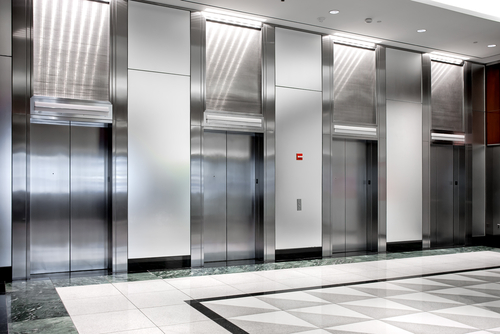
Elevators are indispensable assets in commercial properties that contribute to convenience, safety, and operational efficiency.
Businesses can ensure the reliability and longevity of their elevator systems by implementing a comprehensive lift maintenance strategy encompassing proactive planning, technology integration, emergency preparedness, and collaboration with trusted partners.
This commitment reflects responsible business practices and enhances the overall experience of occupants and visitors.
Looking for a professional and reliable life maintenance service provider in Singapore? Contact us today!




